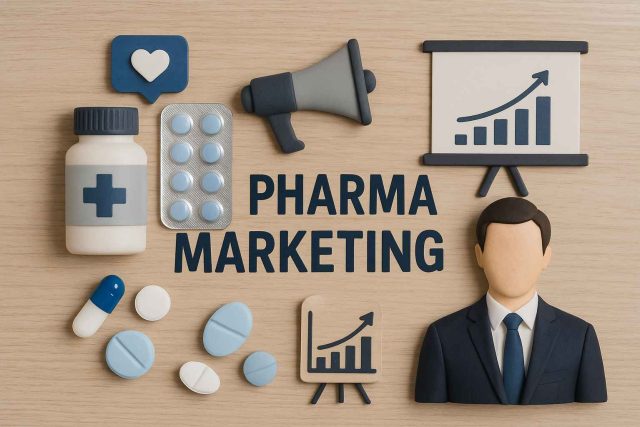
Introduction
If the past few years have taught pharma marketers anything, it’s that agility, data, and digital-first thinking aren’t just buzzwords—they’re survival tactics. Marketing in pharma has undergone a radical shift, propelled by digital transformation, patient-centric demands, and evolving regulatory landscapes. In 2025, the strategies that succeed are rooted in personalization, innovation, and real-time adaptability. So, what’s actually working right now—and what’s not?
Table of Contents:
- Rethinking Engagement in a Digital-First World
- Personalization and Data-Driven Decision Making
- Multichannel Mastery and HCP Outreach
- Staying Compliant While Innovating
- FAQs
Rethinking Engagement in a Digital-First World
Gone are the days when field reps alone could drive prescriptions. In today’s environment, marketing in pharma requires a comprehensive digital footprint. From webinars and social media to AI-powered chatbots and targeted programmatic ads, digital touchpoints now define the majority of brand interactions.
Pharmaceutical brands like Dupixent, Keytruda, and Ozempic are leading the way with creative digital campaigns that blend patient education with dynamic storytelling. These campaigns not only generate brand awareness but also foster trust—an essential currency in healthcare marketing. Meanwhile, engaging HCPs has become more about value-driven content than sales pitches.
Platforms like eHealthcare Solutions offer pharma-specific digital advertising tools that provide precise audience targeting and high engagement rates. These platforms help marketers overcome the challenges of reaching niche audiences while complying with industry guidelines.
Personalization and Data-Driven Decision Making
Successful marketing in pharma today revolves around hyper-targeted messaging. With real-time analytics, machine learning, and CRM integration, pharma marketers can segment their audiences more accurately than ever. Personalized email campaigns, content hubs tailored to specialty interests, and predictive analytics are transforming engagement.
Marketers now rely on real-world evidence (RWE), electronic health records (EHRs), and patient behavior insights to build stronger campaigns. However, personalization must be executed with sensitivity, especially when dealing with patient data. Ensuring transparency and data security is not just ethical—it’s essential for trust.
Data can also guide channel optimization. For instance, knowing whether oncologists prefer digesting content via short videos or downloadable clinical summaries can dictate resource allocation. In 2025, the ability to react to these preferences in near real time is what separates leading pharma marketing teams from the rest.
Multichannel Mastery and HCP Outreach
Pharma marketers can no longer rely on a single campaign format to meet their KPIs. Multichannel integration—across email, webinars, virtual conferences, search, social media, and mobile apps—is key. Each platform plays a unique role in the buyer’s journey, whether it’s awareness, education, or conversion.
That said, human interaction still holds weight. Hybrid engagement strategies, combining virtual outreach with periodic face-to-face interactions, offer a flexible approach for HCP communications. AI-driven sales enablement tools now allow reps to deliver more relevant messages based on HCP behavior, specialty, and interaction history.
Resources from Pharma Marketing Network emphasize the importance of integrating campaign data across all channels. This holistic view ensures that messaging is consistent and impactful, enhancing both patient and provider trust.
Staying Compliant While Innovating
Innovation in pharma marketing cannot come at the cost of regulatory compliance. In 2025, marketing in pharma demands a careful balance between creativity and strict adherence to FDA and international marketing regulations.
Automated compliance monitoring tools now help teams track how their content aligns with regulatory standards. These tools reduce review cycles, flag noncompliant language, and ensure a faster path to launch without compromising legal or ethical standards.
Moreover, diversity and health equity messaging are increasingly scrutinized. Brands must demonstrate inclusivity in their campaigns to build credibility and broaden their reach. Whether discussing chronic conditions like psoriasis or promoting mental health medications, marketers must be mindful of how messages resonate across different demographics.
Staying compliant doesn’t mean avoiding innovation—it means being intentional about how you innovate.
FAQs
What is the biggest trend in marketing in pharma in 2025?
The shift toward data-driven, personalized digital engagement is the most prominent trend in 2025.
How are pharma companies using AI in marketing?
AI helps segment audiences, predict behavior, optimize content delivery, and ensure compliance in real-time.
Is multichannel marketing still effective in pharma?
Yes, especially when platforms are integrated to create seamless, personalized brand experiences across touchpoints.
How can marketers ensure compliance while being creative?
Using automated compliance tools and involving regulatory experts early in the campaign process can help teams remain agile and compliant.
Where can pharma marketers learn more about evolving strategies?
Trusted sources like Pharma Marketing Network and eHealthcare Solutions offer updates, tools, and thought leadership.
Disclaimer:
“This content is not medical advice. For any health issues, always consult a healthcare professional. In an emergency, call 911 or your local emergency services.”